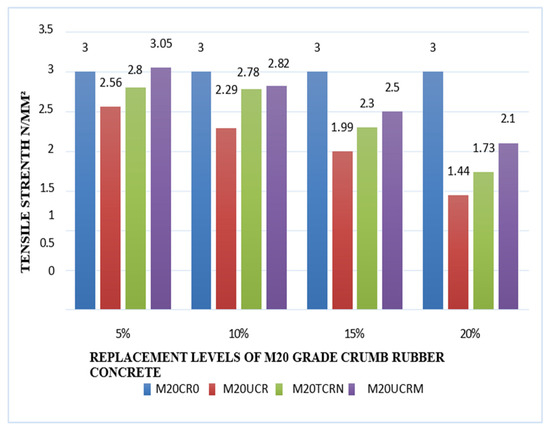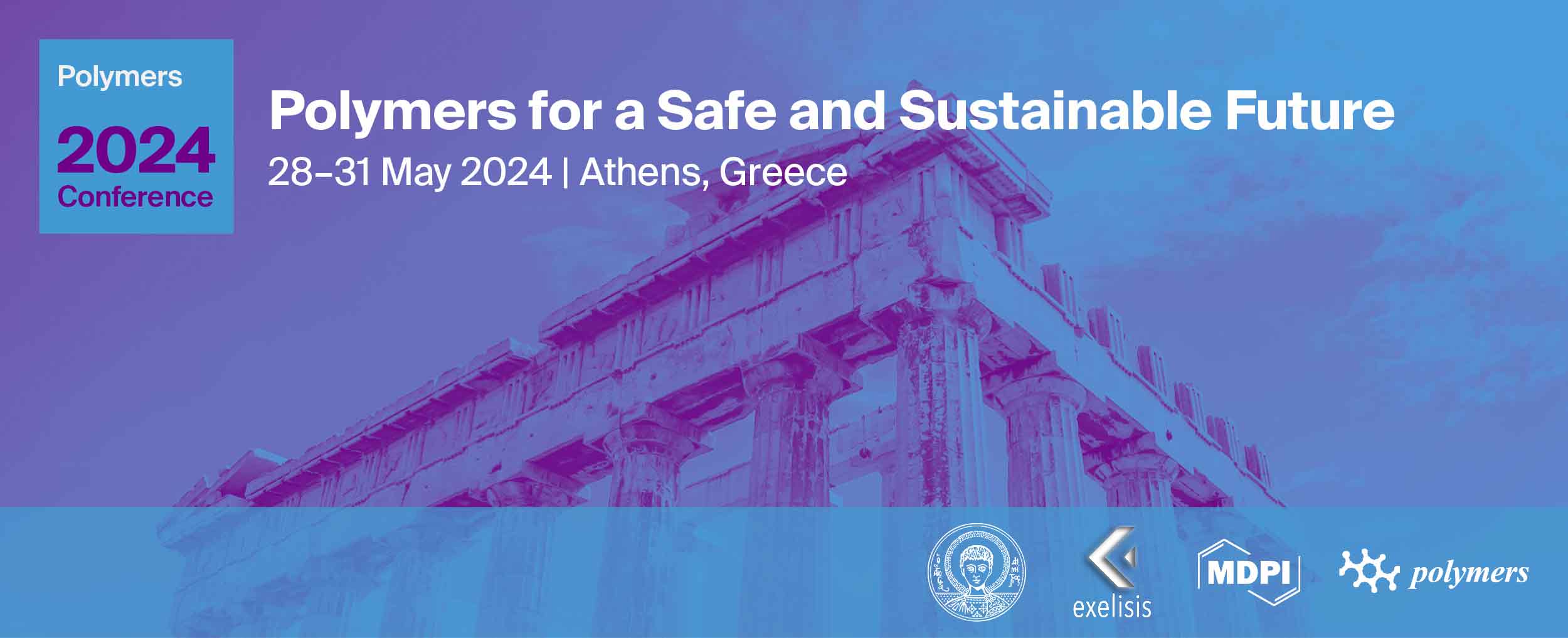-
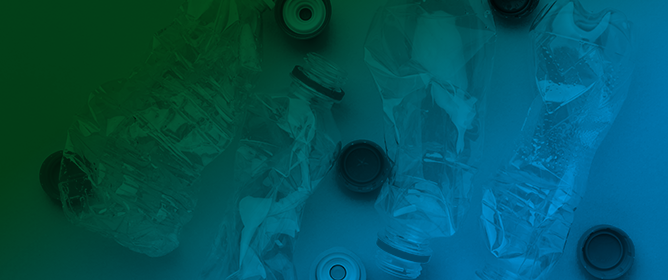 Safety Assessment of Recycled Plastics from Post-Consumer Waste with a Combination of a Miniaturized Ames Test and Chromatographic Analysis
Safety Assessment of Recycled Plastics from Post-Consumer Waste with a Combination of a Miniaturized Ames Test and Chromatographic Analysis -
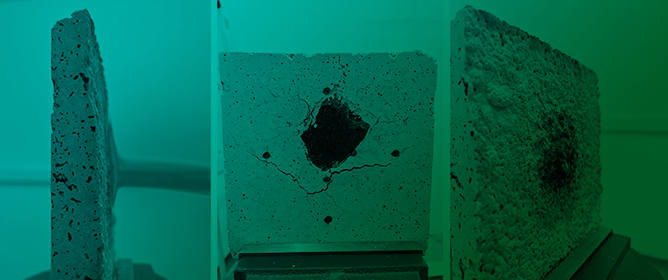 Geopolymerization of Recycled Glass Waste: A Sustainable Solution for a Lightweight and Fire-Resistant Material
Geopolymerization of Recycled Glass Waste: A Sustainable Solution for a Lightweight and Fire-Resistant Material -
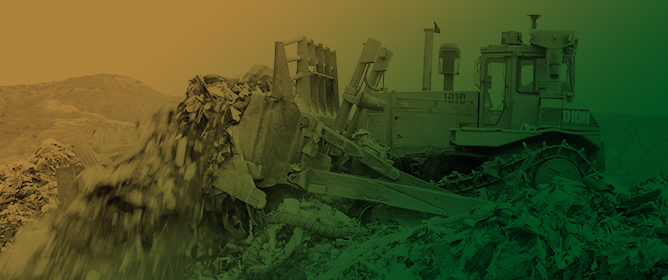 Landfill Capacity: The Case of Slovakia in the EU Situation
Landfill Capacity: The Case of Slovakia in the EU Situation
Journal Description
Recycling
Recycling
is an international, peer-reviewed, open access journal on the recycling and reuse of material resources, including circular economy published bimonthly online by MDPI.
- Open Access— free for readers, with article processing charges (APC) paid by authors or their institutions.
- High Visibility: indexed within Scopus, ESCI (Web of Science), FSTA, Inspec, AGRIS, and other databases.
- Journal Rank: CiteScore - Q2 (Management, Monitoring, Policy and Law)
- Rapid Publication: manuscripts are peer-reviewed and a first decision is provided to authors approximately 20 days after submission; acceptance to publication is undertaken in 4.9 days (median values for papers published in this journal in the second half of 2023).
- Recognition of Reviewers: reviewers who provide timely, thorough peer-review reports receive vouchers entitling them to a discount on the APC of their next publication in any MDPI journal, in appreciation of the work done.
Impact Factor:
4.3 (2022);
5-Year Impact Factor:
4.4 (2022)
Latest Articles
Enhancing the Strength and the Environmental Performance of Concrete with Pre-Treated Crumb Rubber and Micro-Silica
Recycling 2024, 9(3), 32; https://doi.org/10.3390/recycling9030032 - 24 Apr 2024
Abstract
Dumped non-biodegradable tires present a significant environmental threat, with overflowing landfills and associated health risks highlighting the urgency of tire waste disposal. Current disposal methods, such as stacking tires in open spaces, exacerbate the problem. The large-scale recycling of tire rubber waste offers
[...] Read more.
Dumped non-biodegradable tires present a significant environmental threat, with overflowing landfills and associated health risks highlighting the urgency of tire waste disposal. Current disposal methods, such as stacking tires in open spaces, exacerbate the problem. The large-scale recycling of tire rubber waste offers environmental benefits. This study examines the effects of pre-treatment using NaOH and micro-silica as a mineral admixture on the mechanical strength of crumb rubber concrete (CRC) with partial replacement of natural sand. Samples of M20 and M30 grade were prepared with varying levels of crumb rubber (CR) replacement and evaluated at 28 days. CRC prepared with pre-treated NaOH solution and micro-silica showed improved workability and strength compared to conventional concrete and untreated CRC, with the highest strength observed for 5% CR replacement using micro-silica. Predictive models and micro-structural analysis validated these findings. Life Cycle Assessment (LCA) using OpenLCA v2.10 software and the ecoinvent database revealed that incorporating micro-silica into CRC did not significantly increase environmental impacts, compared to conventional concrete across different mixes.
Full article
(This article belongs to the Special Issue Recycling of Rubber Waste, 2nd Edition)
►
Show Figures
Open AccessArticle
Rural Urban Nutrient Partnership (RUN): Life Cycle Assessment of Multi Nutrient Recovery from Kitchen Waste and Blackwater
by
Heinz Stichnothe, Ben Joseph, Volker Preyl and Carsten Meyer
Recycling 2024, 9(2), 31; https://doi.org/10.3390/recycling9020031 - 17 Apr 2024
Abstract
Newly developed and innovative RUN technology aims to recover nutrients from urban wastewater (blackwater) and biowaste (kitchen waste). The development of RUN technology has been supported by the life cycle assessment (LCA) in order to identify hotspots and trade-offs. While the performance of
[...] Read more.
Newly developed and innovative RUN technology aims to recover nutrients from urban wastewater (blackwater) and biowaste (kitchen waste). The development of RUN technology has been supported by the life cycle assessment (LCA) in order to identify hotspots and trade-offs. While the performance of the process at a laboratory scale did not show any environmental benefits from P recovery, the LCA results have helped to improve the environmental performance at the following scale-up step. The recovery of P on a technical scale was environmentally beneficial, especially in terms of the global warming potential (GWP). However, there were still some trade-offs, e.g., freshwater and marine eutrophication were slightly higher compared to conventional P fertilizer production. Given that P is considered a critical raw material and that climate change is probably the most pressing environmental issue, RUN technology has the potential to deliver on both domains.
Full article
(This article belongs to the Special Issue Reuse of Wastewater: Recovery of Water, Nutrients, and Energy—2nd Edition)
►▼
Show Figures

Figure 1
Open AccessReview
An Overview of the Current Trends in Marine Plastic Litter Management for a Sustainable Development
by
Maria Râpă, Elfrida M. Cârstea, Anca A. Șăulean, Cristina L. Popa, Ecaterina Matei, Andra M. Predescu, Cristian Predescu, Simona I. Donțu and Alexandra G. Dincă
Recycling 2024, 9(2), 30; https://doi.org/10.3390/recycling9020030 - 09 Apr 2024
Abstract
►▼
Show Figures
This review summarizes recent data related to the management of marine plastic litter to promote sustainable development. It discusses the distribution and identification of marine plastic litter, assesses the potential socio-economic and environmental impacts of these pollutants, and explores their recovery strategies, from
[...] Read more.
This review summarizes recent data related to the management of marine plastic litter to promote sustainable development. It discusses the distribution and identification of marine plastic litter, assesses the potential socio-economic and environmental impacts of these pollutants, and explores their recovery strategies, from a circular economy perspective. The main findings indicate that the majority of marine plastic litter originates from land-based sources. Current technologies and approaches for valorizing marine plastic litter include mechanical and chemical recycling, blockchain technologies by providing traceability, verification, efficiency and transparency throughout the recycling process, and public awareness programs and education. The developed policies to prevent marine plastic litter emphasize regulations and initiatives focused toward reducing plastic use and improving plastic waste management. By adopting a holistic and sustainable approach, it is possible to mitigate the environmental impact of marine plastic debris while simultaneously creating economic opportunities.
Full article

Graphical abstract
Open AccessArticle
The Influence of a Commercial Few-Layer Graphene on the Photodegradation Resistance of a Waste Polyolefins Stream and Prime Polyolefin Blends
by
S. M. Nourin Sultana, Emna Helal, Giovanna Gutiérrez, Eric David, Nima Moghimian and Nicole R. Demarquette
Recycling 2024, 9(2), 29; https://doi.org/10.3390/recycling9020029 - 09 Apr 2024
Abstract
►▼
Show Figures
This work investigated the photostabilizing role of a commercially available few-layer graphene (FLG) in mixed polyolefins waste stream (MPWS), ensuring extended lifespan for outdoor applications. The investigation was conducted by analyzing carbonyl content increase, surface appearance, and the retention of mechanical properties of
[...] Read more.
This work investigated the photostabilizing role of a commercially available few-layer graphene (FLG) in mixed polyolefins waste stream (MPWS), ensuring extended lifespan for outdoor applications. The investigation was conducted by analyzing carbonyl content increase, surface appearance, and the retention of mechanical properties of UV-exposed MPWS/FLG composites. Despite the likely predegraded condition of MPWS, approximately 60%, 70%, 80%, and 90% of the original ductility was retained in composites containing 1, 4, 7, and 10 wt.% FLG, respectively. Conversely, just 20% of the original ductility was retained in unfilled MPWS. Additionally, less crack density and lower carbonyl concentrations of the composites also highlighted the photoprotection effect of FLG. For prime polyolefin blends, only 0.5 wt.% or 1 wt.% FLG was sufficient to preserve the original surface finishing and protect the mechanical properties from photodegradation. Hence, it was observed that MPWS requires more FLG than prime polyolefin blends to get to comparable property retention. This could be attributed to the poor dispersion of FLG in MPWS and inevitable uncertainties such as the presence of impurities, pre-degradation, and polydispersity associated with MPWS. This study outlines a potential approach to revalorize MPWS that possess a minimal intrinsic value and would otherwise be destined for landfill disposal.
Full article

Figure 1
Open AccessArticle
A Sustainable Solution with Improved Chemical Resilience Using Repurposed Glass Fibers for Sewage Rehabilitation Pipes
by
Devanand Chelot, Shivnarain Ravichandran and Priyank Upadhyaya
Recycling 2024, 9(2), 28; https://doi.org/10.3390/recycling9020028 - 31 Mar 2024
Abstract
This paper introduces a sustainable sewage rehabilitation solution, utilizing repurposed glass fibers for enhanced chemical resilience and environmental conservation. The approach involves dividing a unitary pipe into segments, assembled during commissioning, aiming to reduce installation and transportation costs, particularly in less accessible areas.
[...] Read more.
This paper introduces a sustainable sewage rehabilitation solution, utilizing repurposed glass fibers for enhanced chemical resilience and environmental conservation. The approach involves dividing a unitary pipe into segments, assembled during commissioning, aiming to reduce installation and transportation costs, particularly in less accessible areas. Each pipe segment comprises a multi-layered glass fiber composite sandwich, joined by an adhesive reinforced with recycled glass fibers. The glass fiber-reinforced plastic (GFRP) pipe features a core of blended sand impregnated with resin, an outer layer for impact resistance, and an inner layer to prevent corrosion. Chemical resilience is assessed through a 10,000 h strain corrosion study exposing both unitary and two-piece circular GFRP pipes to sulfuric acid in a deflected condition. An apparent hoop tensile test evaluates mechanical integrity before and after exposure. The experimental results reveal that the two-piece pipe with a tongue and groove joint (TGJ) with recycled glass fiber adhesive exhibits superior long-term bending stress and failure strain % compared to unitary pipes. This enhancement is attributed to the TGJ’s improved load-bearing capability and chemical resistance. The failure strain % of the two-piece pipe (1.697%) is higher compared to the unitary pipe (1.2613%). The long-term bending stress of the two-piece pipe obtained is 119.94 MPa whereas the unitary pipe reaches 93.48 MPa at the 50-year mark. The cost analysis supports the adoption of the two-piece pipe over unitary pipes due to a 40% reduction in carbon emissions and transportation cost. The novelty lies in the utilization of multi-piece pipes with enhanced chemical resilience, achieved through the incorporation of milled fiberglass reinforcements in the TGJ. Strain corrosion tests take a long time to perform; hence, an accelerated test is needed to improve the current recommended testing standard.
Full article
(This article belongs to the Special Issue Sustainable Management in Eco-Materials, Industrial Residues and Construction and Demolition Waste)
►▼
Show Figures
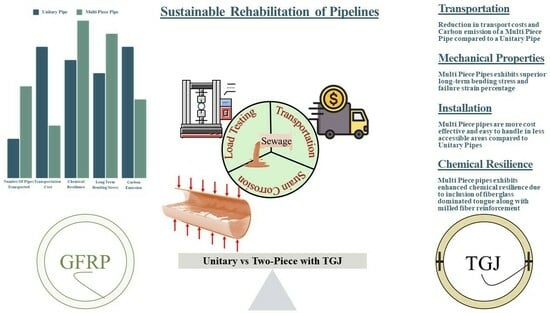
Graphical abstract
Open AccessArticle
Blue Circular Economy—Reuse and Valorization of Bivalve Shells: The Case of Algarve, Portugal
by
Fernanda Caroline Magalhães, Poliana Bellei, Inês Flores-Colen and Eduarda Marques da Costa
Recycling 2024, 9(2), 27; https://doi.org/10.3390/recycling9020027 - 30 Mar 2024
Abstract
►▼
Show Figures
The Circular Economy emerges as an alternative to reinvent the linear production model (take–make–waste), focusing on reintegrating waste into the production cycle, and aiming to minimize both environmental disposal and the unrestrained extraction of raw materials. In this context, the concept of Blue
[...] Read more.
The Circular Economy emerges as an alternative to reinvent the linear production model (take–make–waste), focusing on reintegrating waste into the production cycle, and aiming to minimize both environmental disposal and the unrestrained extraction of raw materials. In this context, the concept of Blue Economy arises, an approach centered on preserving and valorizing marine and coastal resources. This article aims to develop a model for the circuit of bivalve shells, emphasizing the transformation of the residues into new products and identifying how these processes affect sociocultural, economic, and environmental dimensions. The methodology involved the surveying of local stakeholders directly involved in bivalve production and consumption to identify the relationship of these stakeholders with the production, marketing, and disposal of bivalves. It is concluded that biowaste has potential, and there is interest among local stakeholders in reusing it, but a lack of knowledge and connection among stakeholders ultimately leads to the devaluation of the product. The circuit of bivalves is necessary to identify value, propose correct collection, and stimulate interest in their reuse, both by other industries and by the aquaculture industry itself. Exploring the potential for reusing bivalves and mitigating their waste, as well as preventing improper disposal, could drive the development of the Blue Circular Economy in coastal regions.
Full article
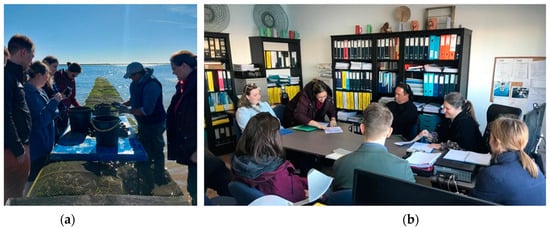
Figure 1
Open AccessArticle
Non-Structural Vibro-Compressed Concrete Incorporating Industrial Wastes
by
Gabriela Bertazzi Pignotti, Ana Mafalda Matos and Fernanda Giannotti da Silva Ferreira
Recycling 2024, 9(2), 26; https://doi.org/10.3390/recycling9020026 - 25 Mar 2024
Abstract
This study presents more eco-efficient concrete formulations for precast vibro-compressed masonry blocks. The proposed formulations incorporated industrial waste, glass powder (GP), and quartz powder (QP), in which natural aggregate was partially replaced by QP (10%) and Portland cement by GP (10% and 20%).
[...] Read more.
This study presents more eco-efficient concrete formulations for precast vibro-compressed masonry blocks. The proposed formulations incorporated industrial waste, glass powder (GP), and quartz powder (QP), in which natural aggregate was partially replaced by QP (10%) and Portland cement by GP (10% and 20%). The best combination of powder materials, water, and admixture was optimised at mortar level, considering a “zero slump” criteria and compressive strength. Afterwards, studies at concrete level followed. Specimens were vibrated and compressed in laboratory and immediately demoulded, aiming to simulate the industrial process. The compressive strength decreased when GP and QP were used alone; however, when combining 10% GP as cement replacement + 10% QP as fine aggregate replacement, the compressive strength increased by approximately 26.6% compared to the reference concrete. Water absorption results varied between 8.92 and 17.9%, and the lowest absorption was obtained by concrete specimens incorporating 20% GP. The UPV presented a narrow range of variation among all concrete mixtures under study, around 2–2.5 km/s at 28 days, whereas electrical resistivity was achieved at 28 days, at 20,000 and 25,000 ohms. Although there were some limitations of the casting process at the laboratory scale, the research results showed promising results, and it seems feasible to use this waste as a substitute for non-renewable raw materials in the production of concrete on an industrial scale. This can provide added value to abundant local wastes while contributing to a circular concrete economy.
Full article
(This article belongs to the Special Issue Sustainable Management in Eco-Materials, Industrial Residues and Construction and Demolition Waste)
►▼
Show Figures
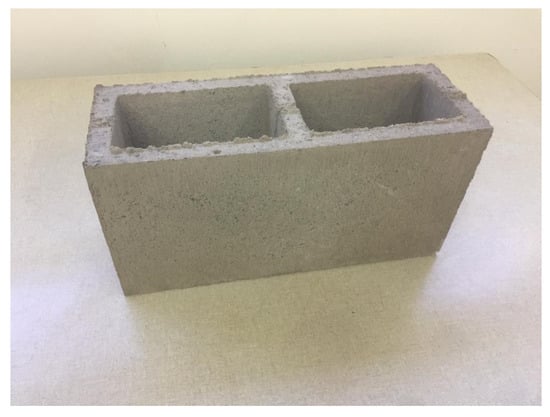
Figure 1
Open AccessReview
Unlocking the Potential of Agrifood Waste for Sustainable Innovation in Agriculture
by
Monica Voss, Carlotta Valle, Emanuela Calcio Gaudino, Silvia Tabasso, Claudio Forte and Giancarlo Cravotto
Recycling 2024, 9(2), 25; https://doi.org/10.3390/recycling9020025 - 20 Mar 2024
Abstract
►▼
Show Figures
The United Nations Environment Programme’s (UNEP’s) Food Waste Index Report 2021 highlights a global annual food waste of 1 billion tons. The UNEP plays a crucial role in achieving Sustainable Development Goal (SDG) 12.3, which aims to halve per capita global food waste
[...] Read more.
The United Nations Environment Programme’s (UNEP’s) Food Waste Index Report 2021 highlights a global annual food waste of 1 billion tons. The UNEP plays a crucial role in achieving Sustainable Development Goal (SDG) 12.3, which aims to halve per capita global food waste (FW) at the retail and consumer levels and reduce food losses along production and supply chains globally by 2030. On the other hand, the agricultural sector faces the challenge of increasing productivity to feed the world’s growing population while reducing the environmental impact on ecosystems and human health. In this context, the conversion of agri-food waste (AFW) into biocides, bio-based fertilizers (BBFs) and biostimulants could represent a successful approach to tackle all these issues. This review shows the latest findings on the different sources of AFW and the application of their bioactive compounds in agriculture. Increasing crop yields and improving plant physiology through the utilization of AFW-derived value products aligns with a circular economy approach, bolstering people’s confidence in managing food waste for improved food production.
Full article
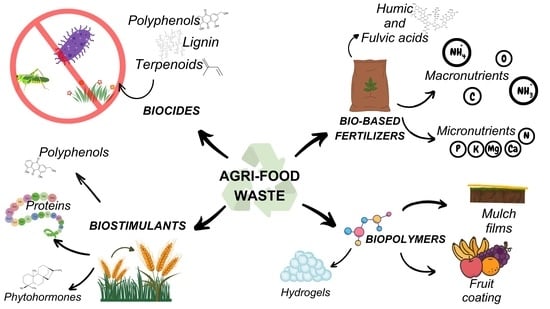
Graphical abstract
Open AccessArticle
A Framework for Developing a National Research Strategy for Water Reuse
by
Arkalgud Ramaprasad and Thant Syn
Recycling 2024, 9(2), 24; https://doi.org/10.3390/recycling9020024 - 16 Mar 2024
Abstract
►▼
Show Figures
Water reuse is critical to national development, sustenance, and survival in this era of climate, demographic, and social changes. There is no systemic national approach to systematically addressing this challenge. This paper presents a framework and method to develop a national research strategy
[...] Read more.
Water reuse is critical to national development, sustenance, and survival in this era of climate, demographic, and social changes. There is no systemic national approach to systematically addressing this challenge. This paper presents a framework and method to develop a national research strategy for water reuse. It presents an ontology of water reuse strategies that encapsulates the combinatorial complexity of the problem clearly, concisely, and comprehensively. Subsequently, it discusses the method to use the framework to develop a national strategy, adapt it through feedback and learning, and ultimately effect a revolutionary change in the strategy for water reuse.
Full article
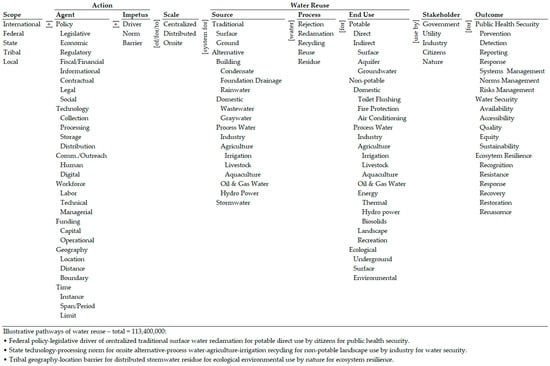
Figure 1
Open AccessArticle
A Comprehensive Performance Evaluation of GGBS-Based Geopolymer Concrete Activated by a Rice Husk Ash-Synthesised Sodium Silicate Solution and Sodium Hydroxide
by
Jonathan Oti, Blessing O. Adeleke, Prageeth R. Mudiyanselage and John Kinuthia
Recycling 2024, 9(2), 23; https://doi.org/10.3390/recycling9020023 - 14 Mar 2024
Abstract
Commercial sodium hydroxide (NaOH) and sodium silicate (SS) are commonly used as alkaline activators in geopolymer concrete production despite concerns about their availability and associated CO2 emissions. This study employs an alternative alkaline activator (AA) synthesized from a sodium silicate alternative (SSA)
[...] Read more.
Commercial sodium hydroxide (NaOH) and sodium silicate (SS) are commonly used as alkaline activators in geopolymer concrete production despite concerns about their availability and associated CO2 emissions. This study employs an alternative alkaline activator (AA) synthesized from a sodium silicate alternative (SSA) solution derived from rice husk ash (RHA) and a 10 M sodium hydroxide solution. The initial phase established an optimal water-to-binder (W/B) ratio of 0.50, balancing workability and structural performance. Subsequent investigations explored the influence of the alkali/precursor (A/P) ratio on geopolymer concrete properties. A control mix uses ordinary Portland cement (OPC), while ground granulated blast-furnace slag (GGBS)-based geopolymer concrete—GPC mixes (GPC1, GPC2, GPC3, GPC4) vary the A/P ratios (0.2, 0.4, 0.6, 0.8) with a 1:1 ratio of sodium silicate to sodium hydroxide (SS: SH). The engineering performance was evaluated through a slump test, and unconfined compressive strength (UCS) and tensile splitting (TS) tests in accordance with the appropriate standards. The geopolymer mixes, excluding GPC3, offer suitable workability; UCS and TS, though lower than the control mix, peak at an A/P ratio of 0.4. Despite lower mechanical strength than OPC, geopolymers’ environmental benefits make them a valuable alternative. GPC2, with a 0.4 A/P ratio and 0.5 W/B (water to binder) ratio, is recommended for balanced workability and structural performance. Future research should focus on enhancing the mechanical properties of geopolymer concrete for sustainable, high-performance mixtures.
Full article
(This article belongs to the Special Issue Sustainable Materials from Waste and Renewable Sources)
►▼
Show Figures
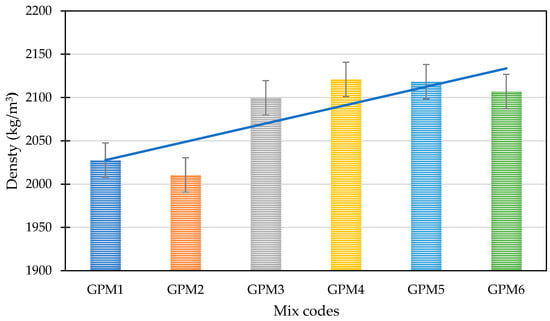
Figure 1
Open AccessArticle
Measurements of the Permeability Coefficient of Waste Coal Ash under Hydrostatic Pressure to Identify the Feasibility of Its Use in Construction
by
Barbara Dutka, Katarzyna Godyń, Przemysław Skotniczny, Katarzyna Tokarczyk and Maciej Tram
Recycling 2024, 9(2), 22; https://doi.org/10.3390/recycling9020022 - 04 Mar 2024
Abstract
►▼
Show Figures
The aim of this research was to measure the filtration properties of waste coal ash under the influence of hydrostatic pressure generated in a three-axial compression apparatus. The scope of work included determining the compactibility parameters, maximum bulk density and optimal moisture content.
[...] Read more.
The aim of this research was to measure the filtration properties of waste coal ash under the influence of hydrostatic pressure generated in a three-axial compression apparatus. The scope of work included determining the compactibility parameters, maximum bulk density and optimal moisture content. Permeability tests were performed for a sample with an average grain composition at three compaction indices
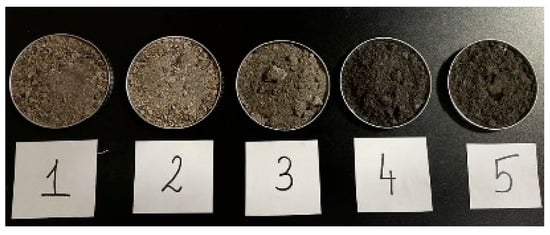
Figure 1
Open AccessArticle
Comparison of Sodium Hydroxide and Sodium Carbonate as Alkali Catalysts in Ethanol Organosolv Treatment of Cotton Stalks for the Release of Hydroxycinnamates
by
Georgia Papadimitriou, Vassiliki Zarnavalou, Theodoros Chatzimitakos, Dimitrios Palaiogiannis, Vassilis Athanasiadis, Stavros I. Lalas and Dimitris P. Makris
Recycling 2024, 9(2), 21; https://doi.org/10.3390/recycling9020021 - 01 Mar 2024
Abstract
►▼
Show Figures
Cotton stalks are residual biomass resulting from cotton bud harvesting, and they are composed primarily of lignocellulosic material. This material could be a source of functional polyphenols. To investigate this prospect, this study was undertaken with the view to examining whether an ethanol-based
[...] Read more.
Cotton stalks are residual biomass resulting from cotton bud harvesting, and they are composed primarily of lignocellulosic material. This material could be a source of functional polyphenols. To investigate this prospect, this study was undertaken with the view to examining whether an ethanol-based organosolv treatment could be suitable for producing extracts enriched in polyphenolic compounds. To this end, alkali catalysis was employed, and two catalysts, sodium hydroxide and sodium carbonate, were tested. The initial approach based on treatment severity showed that both catalysts may be equally effective in the recovery of polyphenols, yet in most cases studied, no clear trend between treatment severity and total polyphenol yield was recorded. The following study, based on response surface methodology, provided optimized conditions for both treatments, sodium hydroxide and sodium carbonate, where the recommended catalyst concentrations were 0.67 and 4%, respectively. Under a constant temperature of 90 °C and residence time of 300 min, the treatments with sodium hydroxide and sodium carbonate afforded total polyphenol yields of 18.4 ± 1 and 15.6 ± 1.9 mg CAE g−1 DM, respectively, which showed no significant statistical difference (p > 0.05). However, high-performance liquid chromatography analyses revealed that the sodium carbonate-catalyzed treatment produced extract particularly enriched in two hydroxycinnamate derivatives, ferulic and p-coumaric acid. This extract also exhibited increased antioxidant activity. The outcome of this study strongly suggests cotton stalks as a bioresource of functional substances, while mild alkali-catalyzed ethanol organosolv treatment appears to be a very promising technique for effectively delivering hydroxycinnamate-enriched extracts.
Full article

Figure 1
Open AccessArticle
Analysis of Essential Features and Optimal Operational Parameters of an RF-ICP Torch for Waste Treatment Applications
by
Mustafa A. Aldeeb, Sharif Abu Darda, Vahid Damideh, Isaac Hassen and Hossam A. Gabbar
Recycling 2024, 9(1), 20; https://doi.org/10.3390/recycling9010020 - 15 Feb 2024
Abstract
►▼
Show Figures
Recently, plasma-based pyrolysis has gained increasing prominence as a technology in response to the growing challenges in waste disposal and the recognition of opportunities to generate valuable by-products. The efficiency of the pyrolysis process is intricately tied to the characteristics of the plasma
[...] Read more.
Recently, plasma-based pyrolysis has gained increasing prominence as a technology in response to the growing challenges in waste disposal and the recognition of opportunities to generate valuable by-products. The efficiency of the pyrolysis process is intricately tied to the characteristics of the plasma involved, particularly the effective electron temperature (Teff) and plasma density (ne). This study aimed to conduct a comprehensive examination of the essential features and optimal operational parameters of a developed RF-ICP torch specifically designed for small-scale municipal solid waste (MSW) pyrolysis (mixture of paper and polypropylene) with the goal of controlling both the torch and the overall process. Using optical emission spectroscopy (OES), we measured plasma parameters, specifically (Teff) and (ne), while varying argon gas flow rates and RF powers. The (Teff) and (ne)were determined using the Boltzmann plot and Stark broadening, respectively. The RF torch was found to generate (ne) up to approximately
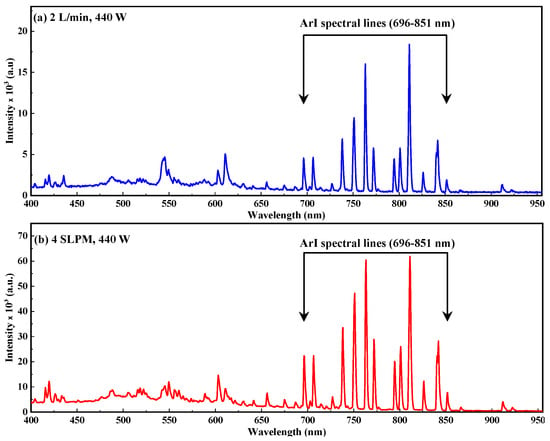
Figure 1
Open AccessReview
Drivers and Barriers in the Production and Utilization of Second-Generation Bioethanol in India
by
Falguni Pattnaik, Biswa R. Patra, Sonil Nanda, Mahendra K. Mohanty, Ajay K. Dalai and Jaya Rawat
Recycling 2024, 9(1), 19; https://doi.org/10.3390/recycling9010019 - 09 Feb 2024
Cited by 1
Abstract
Second-generation biorefinery refers to the production of different types of biofuels, biomaterials, and biochemicals by using agri-based and other lignocellulosic biomasses as substrates, which do not compete with arable lands, water for irrigation, and food supply. From the perspective of transportation fuels, second-generation
[...] Read more.
Second-generation biorefinery refers to the production of different types of biofuels, biomaterials, and biochemicals by using agri-based and other lignocellulosic biomasses as substrates, which do not compete with arable lands, water for irrigation, and food supply. From the perspective of transportation fuels, second-generation bioethanol plays a crucial role in minimizing the dependency on fossil-based fuels, especially gasoline. Significant efforts have been invested in the research and development of second-generation bioethanol for commercialization in both developing and developed countries. However, in different developing countries like India, commercialization of second-generation bioethanol has been obstructed despite the abundance and variety of agricultural feedstocks. This commercial obstruction was majorly attributed to the recalcitrance of the feedstock, by-product management, and marginal subsidies compared to other nations. This article reviews the major roadblocks to the viability and commercialization of second-generation biofuels, especially bioethanol in India and a few other leading developed and developing nations. This article also reviews the biomass availability, technological advancements, investments, policies, and scale-up potential for biorefineries. A thorough discussion is made on the prospects and barriers to research, development, and demonstration as well as strengths, weaknesses, opportunities, and threats for the commercialization of second-generation bioethanol.
Full article
(This article belongs to the Special Issue Resource Recovery from Waste Biomass)
►▼
Show Figures
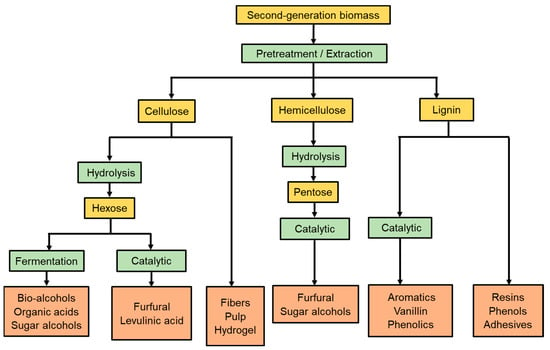
Figure 1
Open AccessArticle
Performance of the Food Waste Recycling Law in Japan with Reference to SDG 12.3
by
Tomoko Okayama and Kohei Watanabe
Recycling 2024, 9(1), 18; https://doi.org/10.3390/recycling9010018 - 08 Feb 2024
Abstract
►▼
Show Figures
SDG target 12.3 calls for halving food waste in retail, food service, and households by 2030. The food waste index developed for this purpose includes parts attached to food that are usually removed intentionally (“unavoidable food waste”) and counts conversion into animal feed
[...] Read more.
SDG target 12.3 calls for halving food waste in retail, food service, and households by 2030. The food waste index developed for this purpose includes parts attached to food that are usually removed intentionally (“unavoidable food waste”) and counts conversion into animal feed and utilisation as biomaterial as a means of reduction. In Japan, the “Food Waste Recycling Law”, which has been in effect since 2001, promotes the recycling of food waste generated from businesses, designating feed conversion as a top priority. On the other hand, based on the more recent “Food Loss Reduction Promotion Act” of 2019, the government is currently promoting reduction in avoidable food waste to meet the SDG target. Based on statistical sources and interviews with ministry officers, this paper explains the history and achievements of Japan’s 23-year policy based on the Food Recycling Law, as well as the tension between the two legislations.
Full article
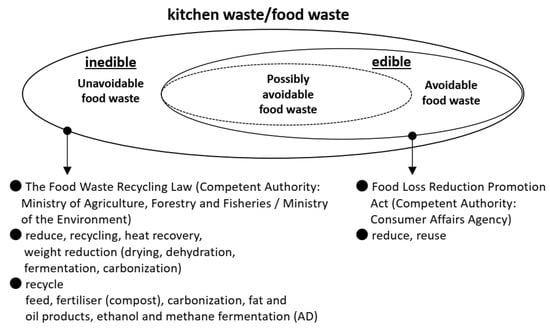
Figure 1
Open AccessReview
A Critical Review on the Application of Recycled Carbon Fiber to Concrete and Cement Composites
by
Manan Bhandari and Il-Woo Nam
Recycling 2024, 9(1), 17; https://doi.org/10.3390/recycling9010017 - 07 Feb 2024
Abstract
►▼
Show Figures
Carbon fiber (CF) exhibit extraordinary properties, such as high specific and tensile strength, high elastic modulus, light weight, and weather resistance, which has led to a rapid increase in the use of CF in sectors such as aerospace, sports equipment, energy storage, automotive,
[...] Read more.
Carbon fiber (CF) exhibit extraordinary properties, such as high specific and tensile strength, high elastic modulus, light weight, and weather resistance, which has led to a rapid increase in the use of CF in sectors such as aerospace, sports equipment, energy storage, automotive, construction, and wind energy applications. However, the increase in CF applications has led to a massive production of CF waste. As CF is non-biodegradable, it results in CF accumulation in landfills. CF waste is a rapidly growing ecological hazard because of its high energy consumption and expensive production methods. The properties of carbon fibers can be preserved even after recycling given the development of recycling technology; therefore, multiple studies have been conducted to demonstrate the effect of recycled carbon fiber (RCF) in different composites such as cement-based composites. This review presents the results of studies conducted on the application of RCF to cement composites and analyzes those results to investigate the effect of RCF on the properties of cement composites such as mechanical properties (compressive strength, flexural strength, and tensile strength), fracture characteristics (fracture toughness and fracture energy), electrical properties, and workability. Overall, the studies demonstrated a positive trend in the application of RCF to cement composites.
Full article
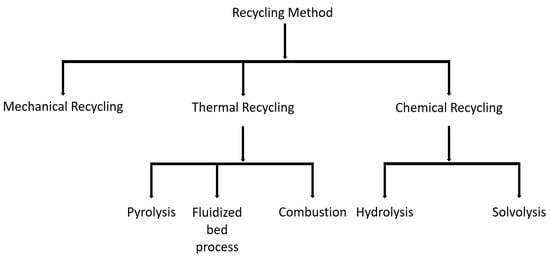
Figure 1
Open AccessArticle
Geopolymerization of Recycled Glass Waste: A Sustainable Solution for a Lightweight and Fire-Resistant Material
by
Marios Valanides, Konstantinos Aivaliotis, Konstantina Oikonomopoulou, Alexandros Fikardos, Pericles Savva, Konstantinos Sakkas and Demetris Nicolaides
Recycling 2024, 9(1), 16; https://doi.org/10.3390/recycling9010016 - 07 Feb 2024
Abstract
Glass is considered a sustainable material with achievable recovery rates within the EU. However, there are limited data available for construction glass waste management. Furthermore, glass is a heavy material, and considering the geographical limitations of Cyprus, the transportation trading cost within the
[...] Read more.
Glass is considered a sustainable material with achievable recovery rates within the EU. However, there are limited data available for construction glass waste management. Furthermore, glass is a heavy material, and considering the geographical limitations of Cyprus, the transportation trading cost within the EU is extremely high. Therefore, another method for utilizing this by-product should be developed. The aim of this research is to investigate the production of a low-cost, lightweight and fireproof material able to retain its structural integrity, using the geopolymerization method with the incorporation of randomly collected construction glass waste. The glass waste was initially processed in a Los Angeles abrasion machine and then through a Micro-Deval apparatus in order to be converted to a fine powder. Mechanical (compressive and flexural strength), physical (setting time and water absorption) and thermal properties (thermal conductivity) were investigated. The fire-resistant materials presented densities averaging 450 kg/m3 with a range of compressive strengths of 0.5 to 3 MPa. Additionally, a techno-economic analysis was conducted to evaluate the viability of the adopted material. Based on the results, the final geopolymer product has the potential to be utilized as a fire resistance material, preventing yielding or spalling.
Full article
(This article belongs to the Topic Sustainable Recycling and Reuse of Industrial By-Products or Waste from Geo-Resource Exploitation)
►▼
Show Figures
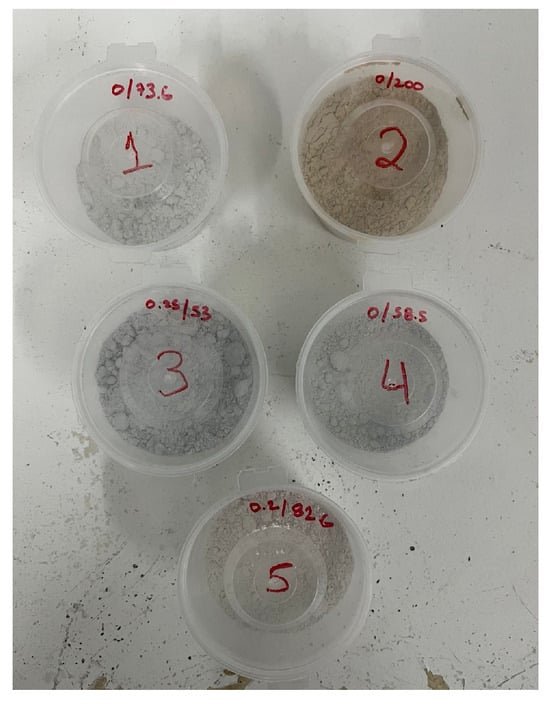
Figure 1
Open AccessArticle
Optimization of Pyrolysis Process Parameters for Fuel Oil Production from the Thermal Recycling of Waste Polypropylene Grocery Bags Using the Box–Behnken Design
by
Balasubramaniam Prabha, Desikan Ramesh, Srinivasan Sriramajayam and Doraiswamy Uma
Recycling 2024, 9(1), 15; https://doi.org/10.3390/recycling9010015 - 06 Feb 2024
Cited by 1
Abstract
The impact of dumping plastic waste is realized in different ecosystems of the planet. Several methods have been adopted to dispose of these wastes for energy recovery. This study, for the first time, proposed the Box–Behnken design technique to optimize the pyrolysis process
[...] Read more.
The impact of dumping plastic waste is realized in different ecosystems of the planet. Several methods have been adopted to dispose of these wastes for energy recovery. This study, for the first time, proposed the Box–Behnken design technique to optimize the pyrolysis process parameters for fuel oil production from waste polypropylene (PP) grocery bags using a semibatch-type pyrolytic reactor. The semibatch-type pyrolytic reactor was developed and employed to produce fuel oil from waste PP grocery bags. The effect of different process parameters on fuel oil production was comprehensively analyzed using the response surface methodology (RSM) with the conjunction of the Box–Behnken design (BBD). The BBD facilitates the prediction of the response variables with respect to changes in the input variables by developing a response model. The BBD was used to optimize the process parameters, such as the reaction temperature (400–550 °C), nitrogen flow rate (5–20 mL min−1), and substrate feed rate (0.25–1.5 kg h−1), and their effect on the responses were observed. The optimum response yields of the fuel oil (89.34 %), solid residue (2.74%), and gas yield (7.92%) were obtained with an optimized temperature (481 °C), a nitrogen flow rate (13 mL min−1), and a feed rate (0.61 kg h−1). The quadratic model obtained for the fuel oil response denotes the greater R2 value (0.99). The specific gravity and calorific value of the fuel oil were found to be 0.787 and 45.42 MJ kg−1, respectively. The fuel oil had higher research octane number (RON) (100.0 min) and motor octane number (MON) (85.1 min) values. These characteristics of the fuel oil were matched with conventional petroleum fuels. Further, Fourier transform infrared spectroscopy (FT-IR) and gas chromatography–mass spectroscopy (GC-MS) were used to analyze the fuel oil, and the results revealed that the fuel oil was enriched with different hydrocarbons, namely, alkane (paraffins) and alkene (olefins), in the carbon range of C4–C20. These results, and also the fractional distillation of the fuel oil, show the presence of petroleum-range hydrocarbons in the waste PP fuel oil.
Full article
(This article belongs to the Special Issue Feature Papers in Recycling 2023)
►▼
Show Figures
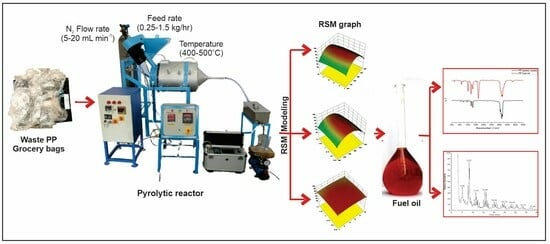
Graphical abstract
Open AccessArticle
Effect of Surface Condition on the Results of Chemical Composition Measurements of Scrap Copper Alloys
by
Łukasz Bernat, Tomasz Jurtsch, Grzegorz Moryson, Jan Moryson and Grzegorz Wiczyński
Recycling 2024, 9(1), 14; https://doi.org/10.3390/recycling9010014 - 04 Feb 2024
Abstract
►▼
Show Figures
The processing of copper-bearing scrap makes it possible to reduce the costs and energy consumption of obtaining copper alloy products compared to producing them from primary raw materials. To achieve this, it is necessary to quickly and accurately determine the content of alloying
[...] Read more.
The processing of copper-bearing scrap makes it possible to reduce the costs and energy consumption of obtaining copper alloy products compared to producing them from primary raw materials. To achieve this, it is necessary to quickly and accurately determine the content of alloying elements in individual scrap elements. However, the copper-bearing scrap obtained at secondary raw materials collection points consists of elements with various surface conditions (due to contamination, shape, paint coatings, roughness, etc.). The paper contains research results on the influence of surface roughness and paint coatings on the measurement result of the content of alloying elements in copper-bearing scrap. Three mobile spectrometers were used for measurements: spark-induced optical emission spectroscopy (OES), X-ray fluorescence spectrometry (XRF) and laser-induced breakdown spectroscopy (LIBS). The tests used elements with different surface roughness (from Ra = 0.03 μm to 6.7 μm) and covered with various types of varnish (alkyd, water-based, oil-phthalic, acrylic, oil-alkyd). It was found that the roughness of Ra < 2 μm does not significantly affect the results of the measurements with the OES and LIBS spectrometers, and a larger scatter of measurement results was observed for the XRF spectrometer compared to OES and LIBS. For Ra > 2 μm, a significant impact of roughness was found on the measurement results (this may result in the erroneous classification of the scrap as an incorrect material group). The influence of paint coatings on the measurement is much stronger compared to surface roughness. Even a single layer of paint can cause a change in the measurement result of the content of alloying elements by more than 10%. In the case of an OES spectrometer, paint coatings may prevent the measurement from being performed (which means that no measurement result can be acquired).
Full article
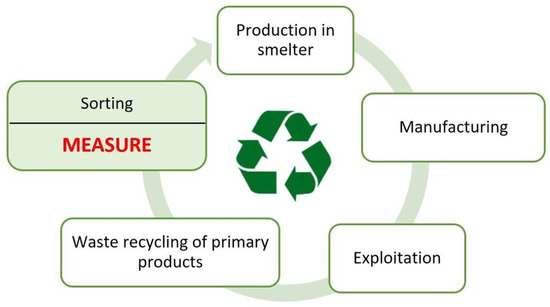
Figure 1
Open AccessReview
Battery Waste Management in Europe: Black Mass Hazardousness and Recycling Strategies in the Light of an Evolving Competitive Regulation
by
Mattia Gianvincenzi, Enrico Maria Mosconi, Marco Marconi and Francesco Tola
Recycling 2024, 9(1), 13; https://doi.org/10.3390/recycling9010013 - 04 Feb 2024
Abstract
►▼
Show Figures
The increasing significance of batteries in the 21st century and the challenges posed by the anticipated surge in end-of-life batteries, particularly within the European context, are examined in this study. Forecasts predict a notable escalation in battery waste, necessitating a focus on the
[...] Read more.
The increasing significance of batteries in the 21st century and the challenges posed by the anticipated surge in end-of-life batteries, particularly within the European context, are examined in this study. Forecasts predict a notable escalation in battery waste, necessitating a focus on the recycling of black mass (BM)—a complex and hazardous byproduct of the battery recycling process. Employing systematic analysis, this research investigates the hazardous nature of BM derived from various battery types. The study underscores the urgent need for definitive legislative classification of BM’s hazardous properties (HPs), in accordance with European regulations. This comprehensive examination of BM’s HPs contributes significantly to the understanding of BM recycling complexities, proving essential for industry stakeholders and guiding future developments in this field. Additionally, the study explores innovative technologies and strategies that could improve recycling efficiency and reduce associated risks. A pivotal finding of this investigation is the inherently hazardous nature of BM, leading to the recommendation that BM should be classified at a minimum under the “HP3—Flammable” category. This discovery underscores the critical need for stringent management protocols and robust regulatory frameworks to address the burgeoning challenge of battery waste in Europe.
Full article
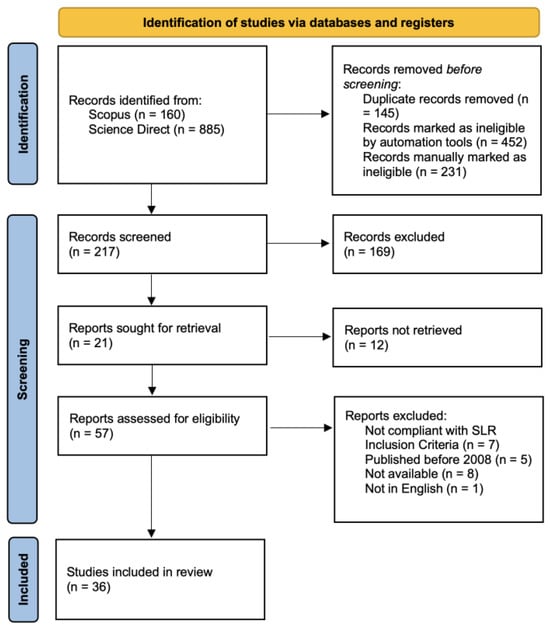
Figure 1
Highly Accessed Articles
Latest Books
E-Mail Alert
News
Topics
Topic in
Buildings, Clean Technol., Materials, Recycling, Sustainability
Circular Economy Innovations and Breakthroughs for Built Environments
Topic Editors: Sakdirat Kaewunruen, Katerina Tsikaloudaki, Ruben P. Borg, Yunlong GuoDeadline: 31 August 2024
Topic in
AppliedChem, ChemEngineering, Energies, Membranes, Processes, Recycling, Separations, Water
Capacitive Deionization Technology for Water Treatment
Topic Editors: Shenxu Bao, Xin ZhangDeadline: 30 September 2024
Topic in
Materials, Mining, Recycling, Resources, Sustainability
Sustainable Recycling and Reuse of Industrial By-Products or Waste from Geo-Resource Exploitation
Topic Editors: Sossio Fabio Graziano, Rossana Bellopede, Giovanna Antonella Dino, Nicola CaredduDeadline: 1 November 2024

Conferences
Special Issues
Special Issue in
Recycling
Resource Recovery from Waste Biomass
Guest Editor: Salustiano Mato De La IglesiaDeadline: 1 May 2024
Special Issue in
Recycling
Emerging Technologies in the Hydrometallurgical Recycling of Critical Metals
Guest Editor: Ana Paula PaivaDeadline: 30 June 2024
Special Issue in
Recycling
Reuse of Wastewater: Recovery of Water, Nutrients, and Energy—2nd Edition
Guest Editors: Ismael Leonardo Vera Puerto, Carlos A. AriasDeadline: 15 September 2024
Special Issue in
Recycling
Recycling of Rubber Waste, 2nd Edition
Guest Editor: Marc Marín-GenescàDeadline: 1 November 2024



